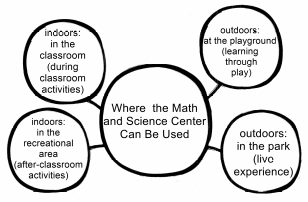Introduction
Mathematics and science may seem like difficult subjects for young children to understand, but with the selection of right approaches, an educator can reach considerable success in increasing preschoolers’ learning opportunities in these spheres. To make young learners eager to study some mathematical and scientific concepts, a teacher has to be creative. There is a variety of materials that may be employed to increase preschoolers’ interest. One of such options is the creation of a math and science center in the classroom.
Igniting Children’s Imagination
The item that might be used for growing learners’ curiosity and skills is a math and science center. This center will be composed of things that can be found in autumn forests, gardens, and parks: chestnuts, pine cones, little pumpkins, nuts, acorns, and spruce cones. Additionally, a platform and balance scale and a magnifying glass will be needed. Children’s imagination will be ignited through inspecting all of these items, learning how they grow and develop, and comparing them. It is a good idea to collect acorns, chestnuts, and spruce and pine cones in spring and summer also. This way, children will be able to learn how these objects grow.
Math Concepts a Child Would Learn
Math concepts a child can learn with the help of the suggested center include the basic number comprehension, addition, subtraction, and division. It is also possible to resent the basics of fractions. To promote the basic number comprehension, the educator may use any of the materials. The main goal is to help children understand that the number two is bigger than one, the number ten is bigger than five, and so on.
To teach addition, subtraction, and division, acorns, pine and spruce cones, nuts, and chestnuts may be used. Pumpkins will be the most suitable for teaching children about fractions. However, it is necessary to take into consideration that a pumpkin which has been cut in pieces will not stay in the classroom for a long time. Thus, it is reasonable to demonstrate fractions on a real and an artificial pumpkin for the first time. Then, in consecutive uses, only the artificial vegetable may be employed.
Science Concepts a Child Would Learn
Teaching science though plants is one of the options most favored by educators (Piasta, Pelatti, & Miller, 2014). Science concepts a child would learn are observing, measuring, comparing, classifying, and predicting. To develop preschoolers’ observing skills, a magnifying glass will be employed. Children will see how each of the items grows and develops and will note the differences between various plants. Measurement and comparison may be learned with the help of scales. To explore the concept of classification, preschoolers will be involved in such activities as separating nuts from pine cones or acorns from accord caps. Finally, it will be easy for young learners to understand prediction by planting an acorn or pumpkin seeds.
Where the Item Might Be Put
The suggested math and science center may be put in the corner of the classroom. Also, it is possible to place it on a separate desk. Another suggestion is situating the center in the playground so that children could learn through playing when they are outside. All kinds of nuts and vegetables may be kept in a basket or a wooden box. The magnifying glass and scales may find their place in another box that has a different color or shape.
An Activity Application Web

Conclusion
Developing preschoolers’ math and science skills is one of the most crucial aspects of an educator’s work. There is a variety of activities and objects that can be used to ignite young learners’ imagination and increase their interest in the mentioned areas of study. Using a math and science center composed of nuts, pumpkins, pine and spruce cones, acorns, and chestnuts will allow teachers to explain the most significant science and math concepts to children.
Reference
Piasta, S. B., Pelatti, C. Y., & Miller, H. L. (2014). Mathematics and science learning opportunities in preschool classrooms. Early Education and Development, 25(4), 445-468.